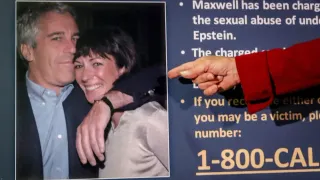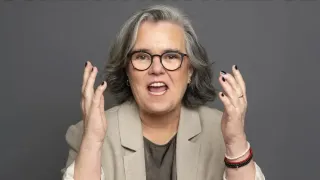May 3, 2014
Williams Institute: Virginia Marriage Equality Would Pour $$ Millions into State
Kilian Melloy READ TIME: 6 MIN.
With polls showing California’s redistricting measure eking out a bare minimum of majority support, local leaders in San Francisco are ramping up efforts to convince voters to back Proposition 50 in the special statewide election taking place November 4. If enacted, it could hamper Republicans’ ability to maintain control of the U.S. House post the 2026 midterm elections.
Various Democratic clubs and community groups supporting the Yes on Prop 50 campaign will be canvassing voters and taking part in a rally this Saturday, September 27. The mobilization begins at 9 a.m. at 3271 18th Street, the labor hall of LiUNA Local 261, an affiliate of the Northern California District Council of Laborers and the Laborers Pacific Southwest Region, with the rally planned for 11:30 a.m.
Among the co-hosts are the Alice B. Toklas LGBTQ Democratic Club and the San Francisco Democratic Party. The local party is also hosting a discussion about Prop 50 from 6 to 7:30 p.m. Thursday, October 2, at the UC Law San Francisco Auditorium located at 198 McAllister Street. Among the panelists will be longtime gay rights lawyer Matt Coles, now a professor of constitutional law at UC Law, San Francisco.
The SF Labor Council is also hosting people to canvass and phone bank on behalf of Prop 50, officially dubbed the California Election Rigging Response Act. On select weekdays from 5 to 8 p.m. it is phone banking at the offices of SEIU 1021 at 350 Rhode Island Street, while canvassing from that location at 10 a.m. Saturdays through Election Day.
Several polls in recent weeks have shown weak support among Golden State voters for Prop 50. The latest, https://emersoncollegepolling.com/california-2025-poll-majority-support-proposition-50-in-november-special-election/ from Emerson College Polling, found just 51% of respondents in favor of using the new House maps.
As the California Democratic Party noted in an email this week, while the results were good news, they were also bad news since “that’s about as close as it gets.”
Even more concerning, noted party officials, “Republicans have only just started spending through their MILLIONS with negative mailers and TV ads.”
Pushed by Democratic California Governor Gavin Newsom to respond to Texas Republican state leaders using a rare mid-decade redistricting effort to try to secure five more seats for GOP House candidates in the Lone Star State next year, the Democratic-controlled Legislature in Sacramento this summer voted to put Prop 50 before Golden State voters. Their aim is to match Texas’ new map with one that creates five more California House seats favorable to Democratic candidates. (Prop 50 would not affect state legislative districts.)
During an appearance Tuesday, September 23, on “The Late Show with Stephen Colbert,” Newsom reiterated his criticisms of President Donald Trump’s attempt to rig next year’s elections by demanding fellow GOP leaders not only in Texas but in Indiana, Missouri, Florida, Ohio, and Utah also draft new maps that disfavor Democratic House candidates in their states. Newsom, a likely 2028 presidential contender, also had choice words for members of his own party.
“And Democrats, we were going to, you know, we’re going hold hands, talk about the way the world should be, say it's just so unfair, maybe write an op-ed. Meanwhile, this guy's consolidating power and so for us, we decided to push back and fight back but it's not just that,” said Newsom, referring to Trump. “That's the tip of the iceberg, rigging the midterm elections because he knows otherwise he'll lose.”
The No on Prop 50 side has zeroed in on how the map impacts different cities and communities across the state in trying to drum up support among voters for rejecting the ballot measure. It recently released a report arguing the proposed maps would dilute community voting power, particularly in smaller cities and counties.
“Stockton has been split into two separate congressional districts – other communities such as Lodi were split into three. Proposition 50 will tear apart a city that has spoken with one unified voice for decades,” stated Bishop Dwight Williams, president of the California Senior Alliance who has been appearing in TV ads for the no campaign. “The Citizens Redistricting Commission heard our community and kept us whole because they understood our shared priorities. Proposition 50 undoes that progress and risks silencing cities like ours across California. We urge voters to reject Proposition 50 and protect fair representation.”
While Prop 50 would have little impact on the Bay Area’s congressional delegation, it could usher out of office a number of Republican House members from the Central Valley and Southern California. As the Bay Area Reporter has been reporting in recent weeks, Congressmember Darrell Issa (R-Vista) would see his 48th Congressional District be redrawn to include Palm Springs, making it an easier pickup for a Democratic candidate.
The LGBTQ retirement and resort mecca is currently part of conservative Congressmember Ken Calvert’s (R-Corona) 41st Congressional District. But it would be joined with sections of San Diego County as part of Issa’s House seat, leading a number of LGBTQ leaders from both the Coachella Valley and San Diego to announce bids for the reconfigured district should Prop 50 pass.
Gubernatorial candidate speaks out
During a recent editorial board meeting with the B.A.R., 2026 gubernatorial candidate and former San Diego city councilmember and interim mayor Toni Akins, a lesbian who went on to serve in the state Legislature until being termed out last year, noted she had just endorsed bisexual San Diego City Councilmember Marni von Wilpert in the race for Issa’s seat, after she ended her bid for state Senate to seek the congressional office.
“You know, I think she would have been a great senator, a state senator. But people run for the seats they want and, you know, I think she has done a good job in office,” said Atkins. “And so, I would support her wherever she wants to run. And now we're seeing shifts there for other seats. Of course, you know, I did say to her, Prop 50 has to pass. You know. But she, she is very energetic and she's very excited about this possibility.”
While she is backing Prop 50, Atkins acknowledged she had some misgivings about abandoning the maps created by the state’s redistricting commission. As president pro tempore of the state Senate, she had a hand in recommending several applicants be seated on the 2020 Citizens Redistricting Commission.
“So, I was pretty proud of the diversity of this group. It is the gold standard, but I also think, as I said earlier, desperate times call for us to respond. And I give a lot of credit to the governor for finding a new tool in the toolbox,” said Atkins. “What we're up against, again, is millions of people losing healthcare, immigrants being taken from their homes, cities like Memphis and D.C., and L.A., you know, being taken over by our military. In the face of that, I think we have to act.”
She also noted that the voters, who initially called for the statewide commission, once again get to vote on the matter. The initiative states the responsibility for redrawing the congressional maps would revert back to the independent body for the 2030 redistricting process.
“It's not something we would typically, I would typically think we would support, but, you know, I think a lot is at stake, and I think we have to respond in kind,” said Atkins. “Especially when you've got a president asking other states to find five seats or whatever, you know, that is against democracy. And I would add, people will get to vote on this.”
Thus, passage of Prop 50 is not guaranteed, Atkins warned.
“There's going to be a lot of work to make this possible, because I think people do think about the process and process is important. But I also think this time calls for this kind of reaction,” she said.
Keep abreast of the latest LGBTQ political news by following the Political Notebook on Threads @ https://www.threads.net/@matthewbajko and on Bluesky @ https://bsky.app/profile/politicalnotes.bsky.social .
Got a tip on LGBTQ politics? Call Matthew S. Bajko at (415) 829-8836 or email [email protected] .






